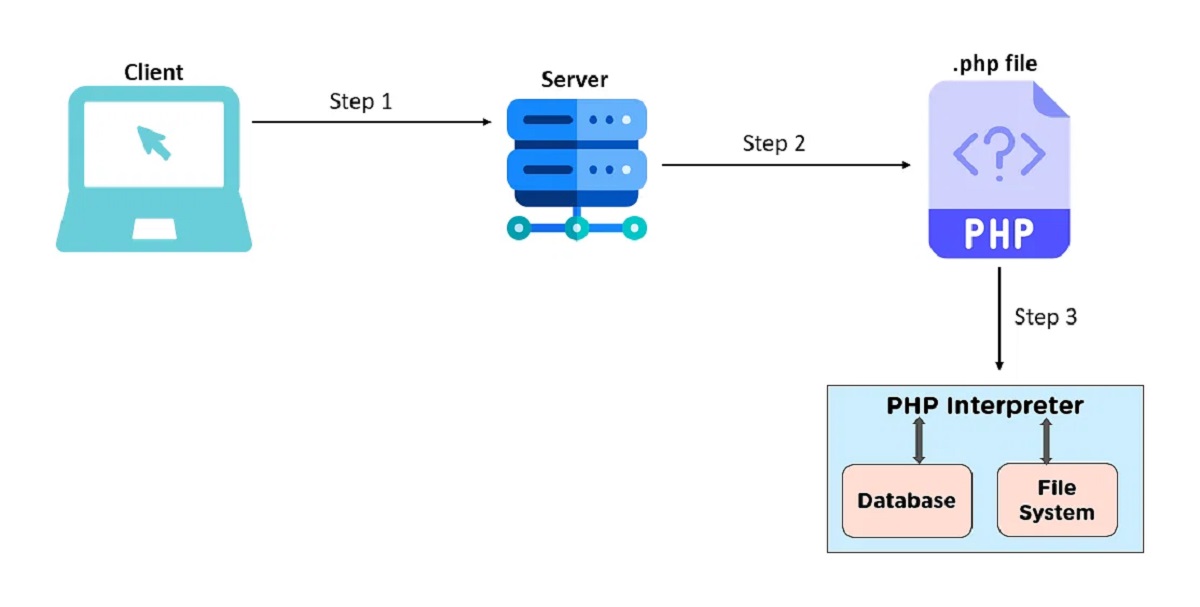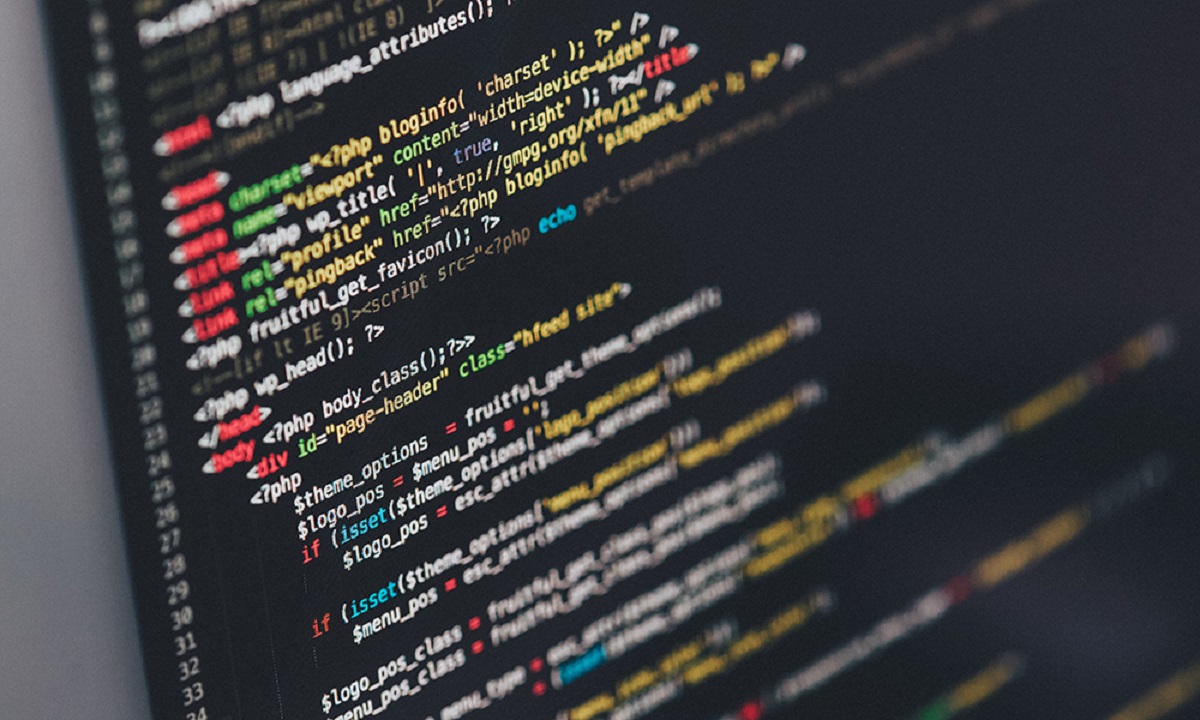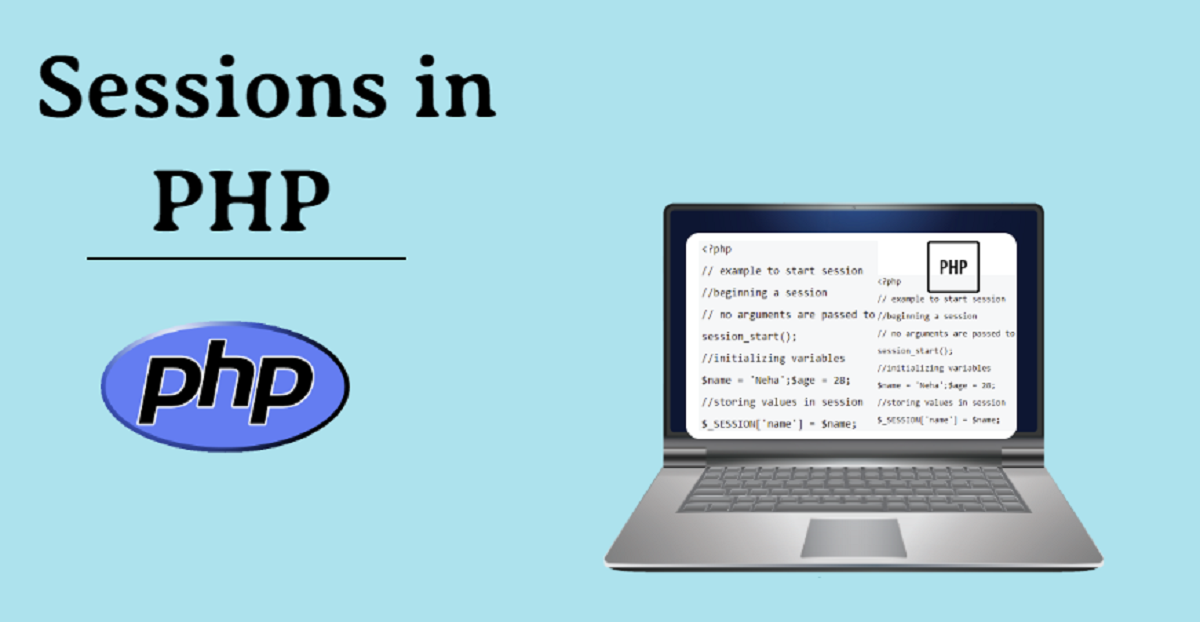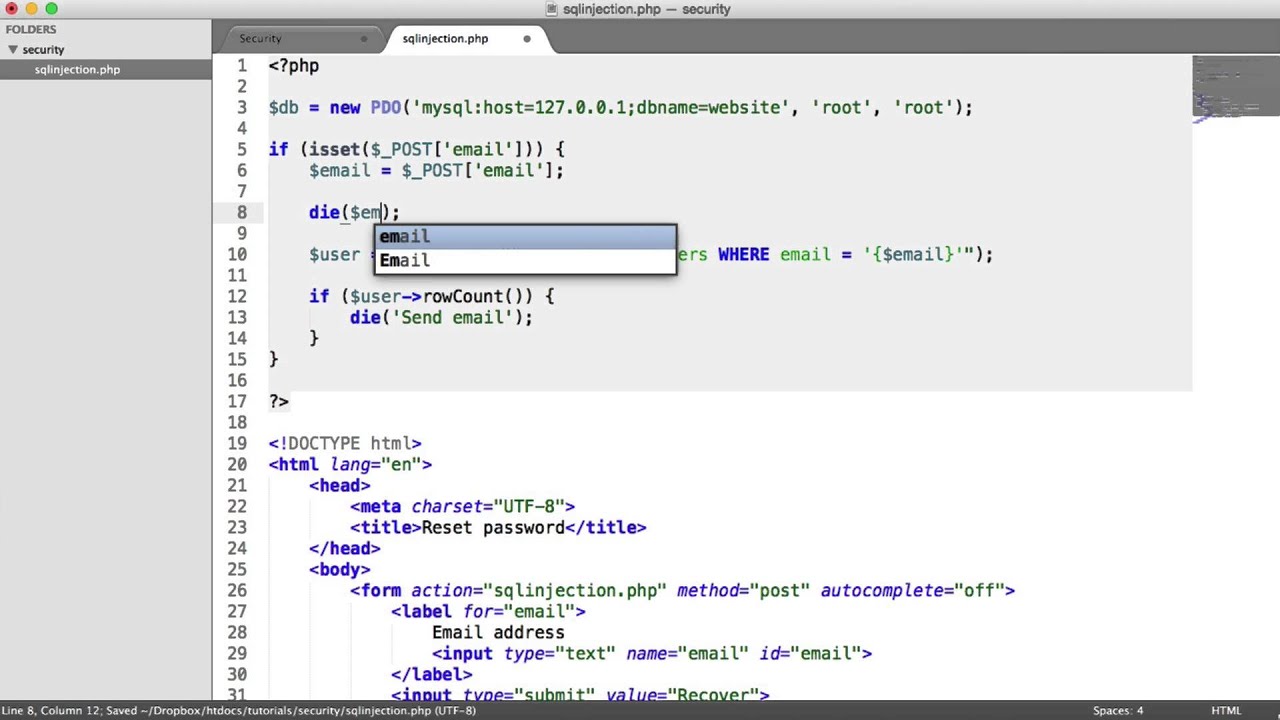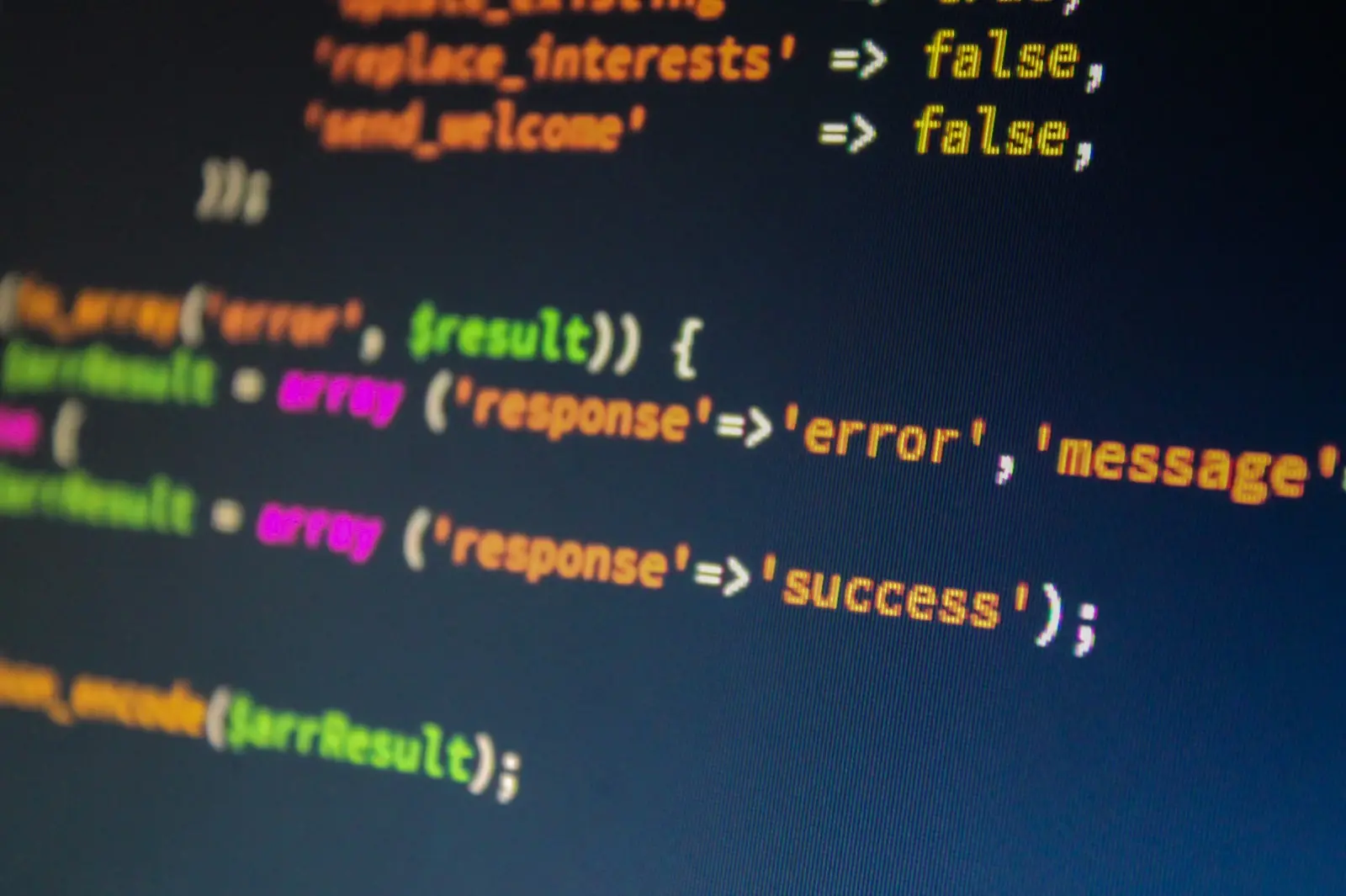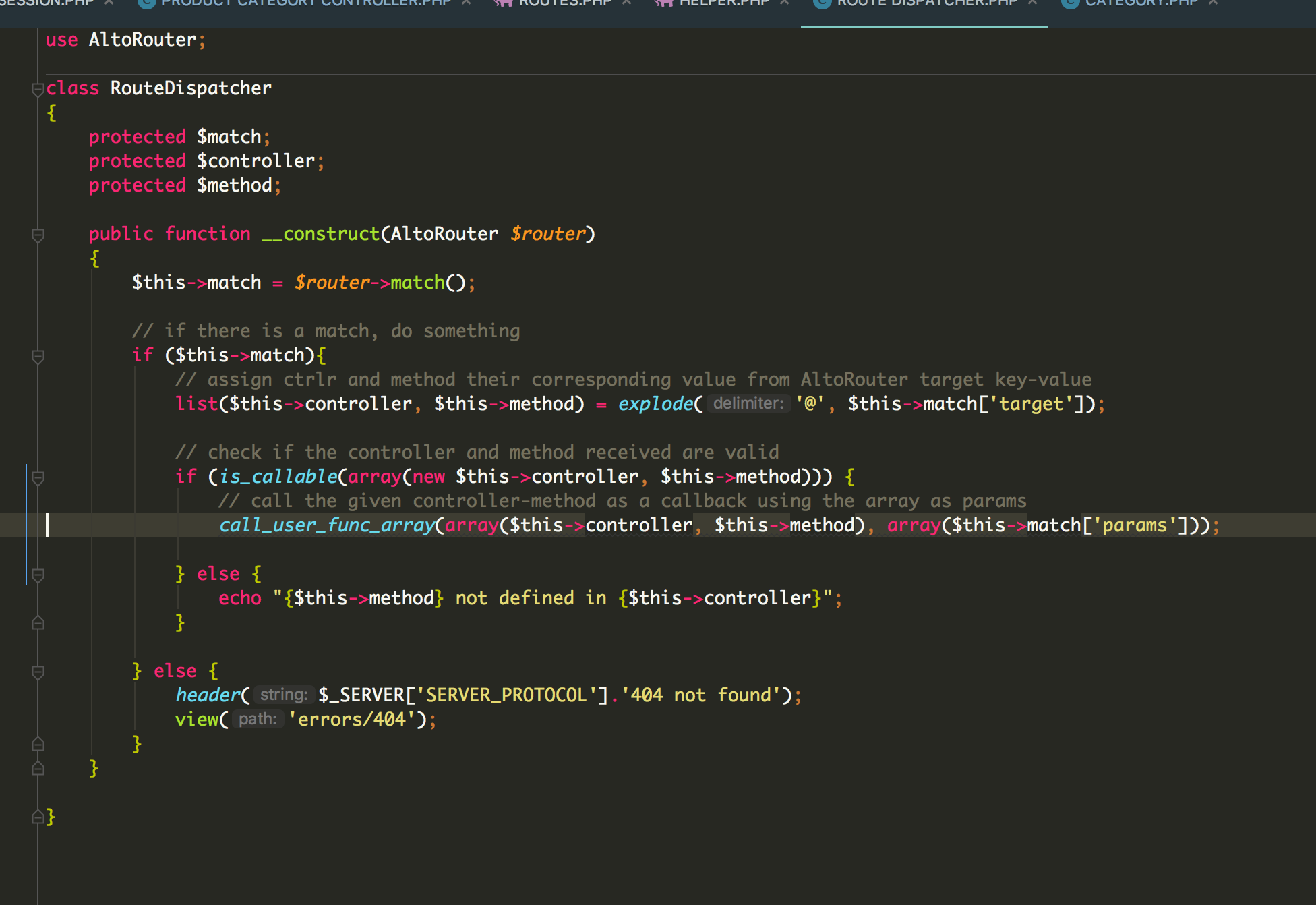Introduction
Welcome to the world of PHP! If you’re new to web development or curious about how PHP works, you’ve come to the right place. PHP, which stands for Hypertext Preprocessor, is a powerful scripting language that is widely used for web development. It allows developers to build dynamic web pages and applications that can interact with databases, process form data, and perform various other server-side tasks.
PHP has become one of the most popular languages for web development due to its simplicity, effectiveness, and extensive community support. It is an open-source language, which means it’s constantly evolving and being improved by a dedicated community of developers.
In this article, we’ll explore the fundamentals of PHP and how it works behind the scenes. We’ll discuss the workings of PHP scripts, the role of the PHP interpreter, and the interaction between the PHP engine and web servers. We’ll also delve into server-side rendering and how PHP fits into the broader web development process.
Whether you’re a beginner or an experienced developer, understanding how PHP works will help you unlock its full potential and create robust web applications. So, let’s dive in and discover the inner workings of PHP!
What is PHP?
PHP is a server-side scripting language that is primarily used for web development. It was originally created by Rasmus Lerdorf in 1994 and has since evolved into a powerful and versatile language. PHP is open-source, which means it is freely available for anyone to use, modify, and distribute.
One of the key features of PHP is its ability to generate dynamic web content. With PHP, you can embed PHP code within HTML pages, allowing you to mix dynamic and static content seamlessly. This makes PHP a popular choice for building websites that require interactive features, such as online forms, user authentication, and database integration.
PHP is known for its simplicity and ease of use, making it accessible to both beginners and experienced developers. Its syntax is similar to C, Java, and Perl, making it relatively easy to learn for those familiar with other programming languages. Additionally, PHP has a large and supportive community, providing extensive documentation, tutorials, and resources to help developers get started.
Another advantage of PHP is its compatibility with various operating systems and web servers. It can run on major platforms like Windows, macOS, Linux, and Unix. Moreover, PHP is compatible with web servers such as Apache, Nginx, and Microsoft IIS, allowing for seamless integration with existing server infrastructure.
Furthermore, PHP offers built-in support for different databases, such as MySQL, PostgreSQL, and SQLite. This enables developers to easily connect to databases and execute SQL queries to fetch and manipulate data. Combined with its ability to handle forms and user input, PHP becomes a powerful tool for building dynamic and data-driven websites.
In summary, PHP is a versatile and widely adopted scripting language for web development. It enables developers to create dynamic, interactive, and database-driven websites with ease. Its simplicity, compatibility, and extensive community support make PHP a popular choice among developers around the world. Now that we have a basic understanding of what PHP is, let’s explore how it works behind the scenes.
How PHP Works
At its core, PHP works by processing PHP scripts on a web server and generating dynamic HTML content that is sent to the client’s web browser. Let’s take a closer look at how PHP works and the various components involved.
PHP scripts are typically embedded within HTML files, denoted by the “.php” file extension. When a client requests a PHP page from a web server, such as Apache or Nginx, the server recognizes the PHP file extension and passes the request to the PHP interpreter.
The PHP interpreter is responsible for executing the PHP code within the file. It starts parsing the PHP script line by line and executing the instructions accordingly. This allows the PHP script to interact with databases, perform calculations, manipulate data, and generate dynamic content on the fly.
During the script execution, PHP can also interact with the server’s filesystem, cookies, and sessions, enabling developers to build sophisticated web applications with user authentication, session management, and file manipulation capabilities.
Once the PHP interpreter completes the script execution, it generates the resulting HTML output. This HTML content is then sent back to the web server, which in turn sends it to the client’s browser. From the client’s perspective, they receive a fully rendered HTML page, unaware of the underlying PHP code that was processed on the server.
PHP’s ability to generate dynamic HTML content is what makes it such a powerful tool in web development. It allows for personalized and interactive web experiences, enabling developers to create dynamic forms, display database-driven content, and handle user input in real-time.
It’s worth noting that PHP is often used in conjunction with other technologies and frameworks, such as MySQL for database management and JavaScript for client-side interactivity. PHP can seamlessly integrate with these tools, providing a comprehensive web development package.
In summary, PHP works by processing PHP scripts on a web server and generating dynamic HTML content that is sent to the client’s browser. The PHP interpreter executes the PHP code, allowing for interactions with databases, file systems, and more. This dynamic content generation capability sets PHP apart as a popular language for building powerful and interactive web applications.
PHP Scripts
PHP scripts form the backbone of PHP-powered applications. These scripts contain a series of instructions written in PHP code that are executed by the PHP interpreter. Let’s dive into the details of PHP scripts and how they function.
To create a PHP script, you can start by opening a plain text editor like Notepad or a specialized integrated development environment (IDE) such as Visual Studio Code or PhpStorm. Save the file with a “.php” extension to indicate that it contains PHP code.
Within a PHP script, you can mix PHP code with HTML markup and other elements. The PHP code is enclosed within opening and closing tags: . This allows you to seamlessly switch between PHP and HTML, making it easier to generate dynamic content within an HTML document.
PHP scripts can include variables, which are used to store and manipulate data. For example, you can define a variable to store a user’s name, email, or any other information needed for your application. Variables in PHP start with a dollar sign ($) followed by the variable name.
Conditional statements, such as if statements and switch statements, enable you to control the flow of your PHP script. With conditionals, you can make decisions based on certain conditions and execute different blocks of code accordingly.
PHP also provides a range of built-in functions that can be used to perform specific tasks. These functions can be used for string manipulation, date and time calculations, mathematical operations, and many other purposes. PHP also supports object-oriented programming, enabling the creation of reusable and organized code through classes and objects.
In addition, PHP scripts can interact with databases to retrieve and modify information. By using functions and extensions specific to the chosen database, you can connect to a database, execute SQL queries, and fetch or manipulate data as needed.
Once a PHP script is complete, it can be executed on the server. This can be done by accessing the file through a web browser, or by configuring the server to automatically execute the script when certain conditions are met, such as when a specific URL is requested.
Overall, PHP scripts serve as the fundamental building blocks of PHP applications. They allow you to write code that executes on the server, manipulate data, generate dynamic content, and interact with various elements of a web application. Understanding how to write and structure PHP scripts is crucial for creating powerful and functional PHP applications.
The Interpreter
The PHP interpreter plays a vital role in the execution of PHP scripts. It is responsible for parsing and executing the PHP code, transforming it into actionable instructions. Let’s explore the workings of the interpreter and how it processes PHP scripts.
When a web server receives a request for a PHP page, it recognizes the PHP file extension and passes the request to the PHP interpreter. The interpreter then takes over and begins the process of parsing the PHP code line by line.
During the parsing phase, the interpreter scans the PHP script and breaks it down into tokens. These tokens are the smallest units of the PHP language, such as keywords, operators, variables, and constants. The interpreter analyzes the structure and meaning of these tokens to understand the intentions of the code.
Once the code has been parsed, the interpreter proceeds to execute the instructions in the order they appear. It begins by initializing any necessary resources, loading extensions, and setting up configurations specified in the script or server settings.
As the interpreter encounters PHP tags (), it identifies them as the start and end points of PHP code blocks. It then interprets and executes each block before moving on to the next. This allows the interpreter to seamlessly switch between PHP and HTML, generating dynamic content within an HTML page.
During the execution phase, the interpreter evaluates variables, performs calculations, processes control structures like loops and conditionals, and interacts with databases if necessary. It also handles functions and class definitions, ensuring that they are correctly registered and available for use.
Furthermore, the interpreter manages the memory allocation and deallocation, ensuring that resources are efficiently utilized and released when they are no longer needed. This helps prevent memory leaks and optimizes the performance of PHP scripts.
In addition to executing PHP code, the interpreter also provides error handling and reporting. If a syntax or runtime error occurs, the interpreter generates error messages that can aid developers in identifying and resolving issues in their code. These error messages can be logged or displayed in the browser, depending on the server configuration.
It’s important to note that the PHP interpreter is not a standalone program, but rather a module or extension that runs within a web server, such as Apache or Nginx. This integration allows for seamless processing of PHP scripts within the web server environment.
In summary, the PHP interpreter plays a crucial role in the execution of PHP scripts. It parses and evaluates the PHP code, executes instructions, handles errors, manages memory, and ensures the smooth integration of PHP with web servers. Understanding how the interpreter works is essential for writing efficient and correct PHP code.
PHP Engine vs. Web Server
When discussing PHP, it’s important to understand the distinction between the PHP engine and the web server. While they are closely related, they serve different functions in the execution of PHP scripts. Let’s explore the differences between the PHP engine and the web server.
The PHP engine, often referred to as the PHP runtime, is responsible for executing PHP code. It interprets the PHP scripts, processes the instructions, and generates the resulting HTML output. The PHP engine takes care of the language-specific aspects and handles the core functionality of PHP.
On the other hand, a web server is responsible for handling client requests and delivering web content, including PHP scripts. It acts as an intermediary between the client’s browser and the PHP engine.
When a client sends a request for a PHP page, the web server initially receives the request. It then determines if the requested file is a PHP file based on the file extension (usually “.php”).
If the file is recognized as a PHP file, the web server passes the request to the PHP engine for processing. The PHP engine takes over and executes the PHP code within the script, generating the dynamic content specified by the script.
Once the PHP script has been executed, the PHP engine hands over the resulting HTML content back to the web server. The web server then delivers this HTML content to the client’s browser, which renders it as a fully rendered web page.
So, while the PHP engine handles the parsing, execution, and generation of dynamic content, the web server acts as the middleman, managing the communication between the client and the PHP engine.
Popular web servers, such as Apache, Nginx, and Microsoft IIS, provide support for PHP integration. They are responsible for configuring and managing the server environment, handling HTTP requests, and ensuring that the PHP engine is correctly invoked for PHP files.
The web server and PHP engine work together harmoniously to process PHP scripts and deliver dynamic content to the client. The web server acts as a facilitator, while the PHP engine handles the core PHP functionality.
It’s important for developers to have knowledge of both the PHP engine and the web server to effectively deploy and troubleshoot PHP applications. Understanding the interaction between these components allows for efficient configuration, optimization, and troubleshooting of PHP-based web applications.
In summary, the PHP engine and the web server are two distinct entities that work together to process PHP scripts. The PHP engine executes the PHP code, while the web server manages client requests and delivers the processed content to the client. Knowing the roles and responsibilities of both components helps developers build and maintain efficient PHP applications.
PHP Requests and Responses
In the world of web development, communication between the client and the server occurs through HTTP requests and responses. PHP plays a crucial role in processing these requests and generating appropriate responses. Let’s delve into how PHP handles requests and responses in the web development process.
When a client, such as a web browser, sends a request to a web server, the request contains information about the desired resource, such as a specific page or file. This request is typically initiated by clicking on a link, submitting a form, or entering a URL in the browser’s address bar.
The web server receives the client’s request and determines the appropriate PHP script to handle it. The server forwards the request to the PHP engine for processing.
Within the PHP script, the request data can be accessed through predefined variables, such as $_GET, $_POST, and $_REQUEST. These variables contain information like form data, query parameters, and cookies sent by the client.
Based on the request data, the PHP script can perform various operations, such as validating data, interacting with databases, processing calculations, or generating dynamic content. This could involve retrieving data from a database, processing it, and preparing a suitable response to send back to the client.
Once the PHP script has completed its processing, it generates a response, which usually takes the form of HTML content. This response is sent back to the web server.
The web server then delivers the generated response to the client as an HTTP response. The response includes an HTTP status code that indicates the success or failure of the request, along with the generated HTML content.
The client’s web browser receives the response and interprets the HTML content, rendering it as a fully rendered web page. The user can then interact with the page and initiate new requests, starting the cycle anew.
Additionally, PHP allows developers to set HTTP headers in the response, providing additional information or instructions to the client or web server. Headers can be used to specify caching rules, redirect the client to a different page, set cookies, or indicate the content type of the response.
Furthermore, PHP supports content negotiation, allowing different content types, such as JSON or XML, to be sent as responses based on the client’s preferences and the capabilities of the server.
By understanding how PHP handles requests and responses, developers can create dynamic and interactive web applications. PHP’s ability to process incoming data, generate appropriate responses, and communicate with the client and web server enables the creation of engaging and personalized web experiences.
In summary, PHP plays an integral role in handling requests and generating responses in the web development process. It processes incoming request data, generates dynamic content, and prepares suitable responses that are delivered back to the client. This bidirectional communication flow allows for the creation of interactive and personalized web applications.
Server-side Rendering
Server-side rendering (SSR) is a process where web pages are dynamically generated on the server and sent to the client as fully rendered HTML. PHP, being a server-side scripting language, is commonly used for server-side rendering. Let’s explore the concept of server-side rendering and its advantages.
In a typical client-side rendering (CSR) scenario, the client’s web browser retrieves HTML files from the server and then uses JavaScript to manipulate the DOM and render the content. This approach shifts a lot of the rendering responsibility to the client’s device.
However, with server-side rendering, the rendering process is executed on the server before the HTML is sent to the client’s browser. This means that the server processes the PHP code, interacts with databases or other resources, and generates the complete HTML page to be delivered to the client.
The advantages of server-side rendering are numerous. Firstly, it allows for faster initial page loading times, as the server delivers pre-rendered HTML to the client, reducing the amount of work the client’s browser has to do.
Server-side rendering also contributes to better search engine optimization (SEO). Search engine crawlers can easily read the server-rendered HTML content, making it easier for your website to be indexed and ranked by search engines.
Additionally, server-side rendering improves the user experience by providing a smooth loading experience, especially on slower connections or older devices. Users can see the content even before scripts are loaded and executed, ensuring accessibility and reducing the chances of displaying empty or blank pages.
Server-side rendering is particularly useful in applications that require heavy data processing, such as e-commerce platforms or content management systems. By executing PHP code on the server, it is possible to retrieve and manipulate large datasets efficiently and present the final result to the user.
However, it’s important to note that server-side rendering may have some limitations when it comes to building highly interactive and dynamic user interfaces. In these cases, a combination of server-side rendering and client-side rendering techniques, known as hybrid rendering, can be employed, where initial content is rendered on the server and further interactivity is added through client-side scripting.
In summary, server-side rendering with PHP brings several benefits, including improved page loading times, enhanced SEO capabilities, and better user experiences. It allows for efficient data processing and is particularly suitable for applications with heavy data requirements. Server-side rendering, along with other rendering strategies, is an essential tool in creating fast, accessible, and functional web applications.
PHP in the Web Development Process
PHP plays a significant role in the web development process, offering a powerful and flexible environment for building dynamic websites and applications. Let’s explore how PHP fits into the broader web development process and its impact on creating functional and interactive web experiences.
PHP is primarily used on the server-side, working hand in hand with web servers to handle client requests and generate dynamic content. It allows developers to seamlessly integrate PHP code within HTML pages, enabling the creation of interactive and personalized web experiences.
One of the key advantages of PHP in the web development process is its ability to process form data. With PHP, developers can easily collect and validate user input from HTML forms. This data can be processed, stored in databases, and used for various purposes, such as user registration and login systems, contact forms, and e-commerce transactions.
PHP also provides powerful database integration capabilities. It supports various databases such as MySQL, PostgreSQL, and SQLite, allowing developers to connect to databases, retrieve data, execute queries, and update records. This enables the creation of dynamic and data-driven websites and applications.
Furthermore, PHP incorporates extensive file handling capabilities. Developers can upload files to the server, manipulate file data, and manage file storage. This is especially useful for applications that involve file sharing, image galleries, or file management systems.
Another area where PHP shines in the web development process is in server-side validation and security. PHP offers numerous functions and tools to prevent common security vulnerabilities, such as SQL injection, cross-site scripting (XSS), and cross-site request forgery (CSRF). Developers can sanitize input data, validate user permissions, and implement strong security measures to protect websites and applications.
PHP is highly extensible, with a vast ecosystem of libraries, frameworks, and plugins available. Popular PHP frameworks like Laravel, Symfony, and CodeIgniter provide automated solutions for common web development tasks, simplifying the development process and promoting code reusability.
Moreover, PHP is well-suited for creating RESTful APIs (Application Programming Interfaces). It can handle HTTP requests and responses efficiently, making it an ideal choice for building API endpoints to support mobile applications, third-party integrations, and microservices architectures.
Throughout the web development process, debugging and testing PHP applications are essential. PHP offers robust error handling and logging mechanisms, making it easier to identify and fix issues during development. Additionally, PHP provides a built-in web server (PHP’s CLI Server) for local development and testing purposes.
In summary, PHP plays a critical role in the web development process, enabling developers to build dynamic, data-driven, and secure websites and applications. Its support for form processing, database integration, file handling, and security measures make PHP a versatile language for a wide range of web development projects. PHP’s extensibility and its strong ecosystem of frameworks and tools further enhance the development process, empowering developers to create efficient and highly functional web experiences.
PHP Frameworks
PHP frameworks are powerful tools that streamline the development process by providing a structured and reusable foundation for building web applications. These frameworks offer a set of libraries, components, and conventions that simplify common web development tasks. Let’s explore the benefits of using PHP frameworks and some popular choices in the PHP ecosystem.
PHP frameworks help developers adhere to best practices and coding standards, resulting in clean, maintainable, and scalable code. They provide a structured approach to application development, enforcing separation of concerns and promoting modularization. This modularization allows developers to work on different parts of the application simultaneously, improving productivity and collaboration within development teams.
A key advantage of PHP frameworks is the availability of built-in features and libraries. These features often include database abstractions, form validation, session management, routing, caching, and authentication, among other functionalities. By leveraging these built-in features, developers can save time and effort, as they don’t have to reinvent the wheel for common tasks.
PHP frameworks also provide an extensive ecosystem of plugins and extensions, which further enhance their capabilities. With these plugins, developers can easily extend the functionality of their applications without having to start from scratch. This extensibility fosters rapid development and enables developers to focus on the unique requirements of their projects.
Several popular PHP frameworks have gained widespread adoption and community support. Laravel, known for its elegant syntax and intuitive features, has become one of the most popular PHP frameworks. It provides a powerful ORM (Object-Relational Mapping) system, robust routing, and a wide range of built-in tools and libraries.
Symfony, another prominent PHP framework, offers a highly modular and flexible architecture. It follows the best practices of software engineering and emphasizes reusability. Symfony’s comprehensive documentation and active community make it a reliable choice for complex enterprise-level projects.
CodeIgniter, though lightweight, is known for its simplicity and ease of use. It prioritizes simplicity over complexity and allows developers to build applications quickly. CodeIgniter’s simplicity makes it an excellent framework for beginners and projects that don’t require a full-fledged framework.
CakePHP is a robust and feature-rich framework that focuses on convention over configuration. It offers excellent support for rapid application development and follows the principles of “don’t repeat yourself” (DRY) and “convention over configuration” (CoC).
Other popular PHP frameworks include Zend Framework, Yii, and Phalcon, each with its own strengths and unique features.
Choosing the right PHP framework depends on various factors, including project requirements, development team preferences, scalability, and community support. It’s important to evaluate the features, documentation, and community activity of different frameworks to select the one that best fits the project’s needs.
In summary, PHP frameworks provide a structured and efficient approach to web application development. They offer built-in features, promote best practices, and foster a community-driven ecosystem. PHP frameworks like Laravel, Symfony, CodeIgniter, and CakePHP have gained popularity for their powerful features and ease of use. Choosing the appropriate framework helps developers expedite development, enhance code quality, and build robust web applications efficiently.
Conclusion
PHP is a versatile and powerful scripting language that has become a cornerstone in the world of web development. Its ability to generate dynamic content, interact with databases, and handle server-side processing has made it a popular choice among developers.
In this article, we explored the fundamentals of PHP, understanding its role in the web development process. We learned about PHP scripts, the PHP interpreter, and the interaction between PHP and web servers. We also discussed how PHP handles requests and generates responses, as well as the benefits of server-side rendering.
Additionally, we explored the importance of PHP frameworks in web development. These frameworks provide structure, modularity, and built-in features that streamline the development process and promote code reusability.
Whether you’re a beginner learning the ropes of web development or an experienced developer looking to level up your skills, PHP offers a wide range of tools and capabilities to meet your needs. With its simplicity, extensive community support, and vast ecosystem of frameworks and libraries, PHP continues to empower developers to create dynamic and interactive web experiences.
As technology continues to evolve, PHP remains a relevant and valuable skill in the ever-changing world of web development. By keeping up with the latest advancements in PHP and expanding your knowledge in areas such as database integration, security, and APIs, you can stay ahead of the curve and create cutting-edge web applications.
So, whether you’re building a personal website, an e-commerce platform, or a complex enterprise-level application, PHP provides the tools and capabilities necessary for success. Embrace the power of PHP, explore its vast ecosystem, and continue to learn and grow as a web developer.







